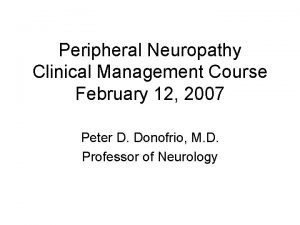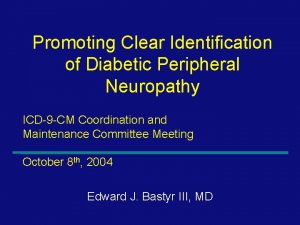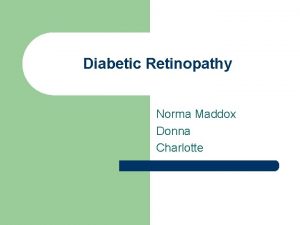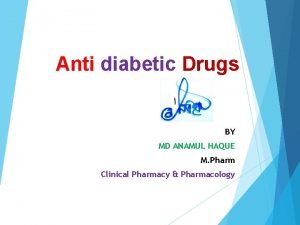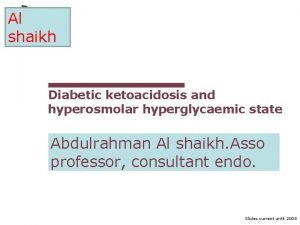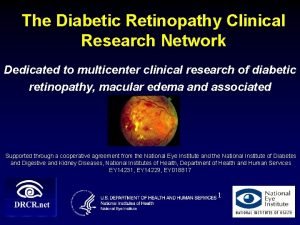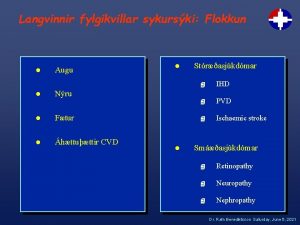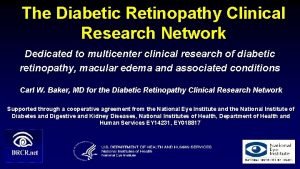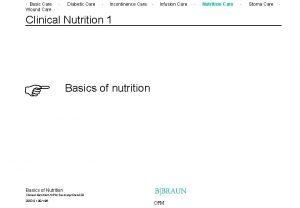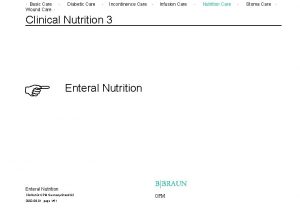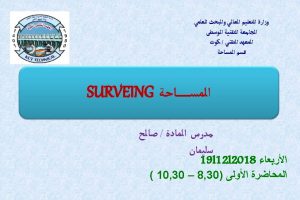Obstacles of optimum care for diabetic children in

Obstacles of optimum care for diabetic children in Palestine Prepared by Dr. Intisar Al-Alem November 2008

What is Type 1 DM ? ¢ Type 1 DM (T 1 DM) is used to denote childhood diabetes associated with autoimmunity and absolute insulin deficiency ¢ Type 1 diabetes is a condition in which the pancreas makes so little insulin that the body can't use blood sugar for energy ¢ Type 1 diabetes must be controlled with daily insulin shots

Management of Diabetic Children ¢ Diabetic children should be offered an ongoing integrated package of care by a multidisciplinary paediatric diabetes care team (optimum care & reduction of complications) ¢ Diabetic children and their families should be offered 24 -hour access to advice from the diabetes care team.

Epidemiology of Type 1 DM ¢ Globally, about 500, 000 children under the age of 15 with T 1 DM ¢ Every day 200 children develop T 1 DM ¢ Every year, 70, 000 children under the age of 15 develop T 1 DM ¢ T 1 DM is increasing in children at a rate of 3% each year ¢ T 1 DM is increasing fastest in pre-school children, at rate of 5% per year ¢ In Palestine until now we havnt true statistics

Diabetic children in government PHC diabetic clinics , West Bank (2006) Total number of diabetics Type 1 diabetics ALKhaleil 3187 282 Nablus 4288 197 Jenin 4381 250 Ramallah 1140 137 Bethlehem 1198 193 Tulkarm 1672 128 Al-Quds 766 36 Qalqiliah 1160 49 Salfit 862 36 Jericho 570 34

Distribution of reported new registered cases of diabetic children in government PHC diabetic clinics , West Bank 2007 Age group 0 -4 4 -14 0 -14 Sex M F M F West Bank 4 4 32 24 36 28 ALKhaleil 0 1 4 3 4 4 Nablus 1 1 5 4 6 5 Jenin 1 2 6 5 7 7 Ramallah 1 0 8 1 9 1 Bethlehem 1 0 1 2 2 2 Tulkarm 0 0 3 5

Distribution of reported new registered cases of diabetic children in government PHC diabetic clinics , West Bank 2007 Age group 0 -4 4 -14 0 -14 Sex M F M F Al-Quds 0 0 2 0 Qalqiliah 0 0 0 2 Salfit 0 0 1 0 Jericho 0 0 2 2 Population in West Bank 194029 198119 330938 326970 524967 525089 Incidence rate (per 100, 000) 2. 1 2. 0 9. 7 7. 3 6. 9 5. 3

Diabetic clinics in Palestine Specialized diabetic clinics began in 1987 ¢ now there are 10 clinics one in each district & also many small clinics in villages (4 in Nablus, 9 in Jenin & 4 in Hebron) which are operating according to an organized program ¢ These clinics provide medical services for about 20000 diabetic patients in the west bank ¢ There is coordination between central clinic in the city , those in the villages & also between diabetic clinic & governmental hospitals. ¢ Diabetic children are followed-up with other diabetics

Obstacles of optimum care for diabetic children in Palestine ¢ Political Obstacles ¢ National Obstacles ¢ Obstacles (MOH) ¢ Psychosocial obstacles

Political Obstacles ¢ Lack of communication between Gaza &west bank ¢ Siege &check points make access to clinics difficult, especially for those who are living in far areas ¢ Economic problems

National Obstacles ¢ Lack of cooperation & coordinated between health providers ¢ Lack of national treatment guidelines ¢ Shortage of human and financial resources ¢ Lack of important specialists ¢ Lack of screening and early detection activities ¢ There is no statistical information and studies to estimate the real side of the problem

Obstacles (MOH): ¢ Until now there are no specialized clinics for care of diabetic children in MOH & those patients are followed-up among others ¢ Shortage of well trained medical staff who provide care for diabetic children ¢ Lack of some important specialties pediatric endocrinologists, vascular surgeons, ophthalmologists, podiatrists, chiropodists, health educators and dieticians ¢ Trained physicians &nurses are not enough for this number of patients. ¢ Because of work over load there is no enough time or space to provide appropriate health care or education

Obstacles (MOH): ¢ Lack of materials, drugs and equipments necessary for proper management ¢ Lack of Guidelines &protocols for management of diabetic children ¢ Lack of educational & entertainment programs ¢ Because of the lack of home visiting program, disabled patients deprived from proper health care, also follow-up after hospital discharge is lacking.

Psychosocial obstacles ¢ Financial barriers (healthy food, gluco-strips, clinic visits) ¢ Denial & non-adherence to therapy (insulin injections, snacks, home monitoring, diet, exercise ®ular visits to clinic) ¢ Stigma like delay in marriage or reduced job opportunities ¢ Lack of knowledge (family & school members)

Suggestion for optimum care of diabetic children l Establishment of special clinic l Training of physicians &nurses externally &locally l Training of new important specialties l Development &implementation of guidelines &protocols l Continuous education programs for patients & their relatives (families &teachers)
- Slides: 15


